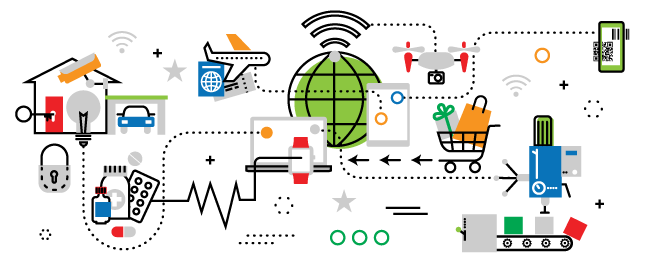
Why does the Internet of Things matter to you?
The Internet of Things (IoT) sounds a bit mysterious.
But as more devices connect online and to each other, opportunities—and potential security pitfalls—abound.
Dupaco Community Credit Union’s Camilo Ruiz, information security manager, helps explain IoT—and how it impacts you.
Internet of Things defined
Today, devices everywhere connect online or to one another, including:
“All those devices, created with the main purpose of improving the quality of life, have in common that they are connected to internet,” Ruiz said. “So, all of these devices that send and receive data constantly are called Internet of Things.”
More than 8.4 billion such “things” were in use worldwide last year, according to the analyst company Gartner. That figure is expected to soar to 20.4 billion by 2020, with Cisco estimating there will be 3.4 connected devices per person that same year.
Why are so many devices connected?
Forbes contributor Jacob Morgan explains the potential that IoT offers:
“What if your alarm clock wakes up you at 6 a.m. and then notifies your coffee maker to start brewing coffee for you? What if your office equipment knew when it was running low on supplies and automatically re-ordered more?”
The possibilities seem endless.
More devices bring greater risks
But with billions of connected “things” worldwide, created by thousands of companies, the greater the risk of hackers gaining access to your information, Ruiz said.
For example, hackers could use a smart TV to access your personal information. But you can reduce your risk by using a protected network (see more below).
The IoT encompasses certain health care devices too. If you or someone you know needs a heart pacemaker, it’s important to ask thorough questions about the security of wireless options.
“It sounds like science fiction. But nowadays it is technically feasible to compromise these devices remotely,” Ruiz said. “And this is the reason many patients and doctors are making the decision to disable the wireless function of the device to reduce the risks.”
What you can do to protect your information
For personal devices connected to your home network, it’s important to follow the same security measures recommended for computers:
- Change the default password of your modem and router. And use unique usernames and passwords that are easy to remember but hard to guess.
Pro tip: Passphrases are more secure and easier to remember than passwords.
- Regularly confirm that your modem and router have the latest updates and firmware.
- Unplug your router and modem on a regular basis to reset the device. It also helps with the network speed and security of your home network.
- With any IoT device, enable the automatic updates function if it has one.


